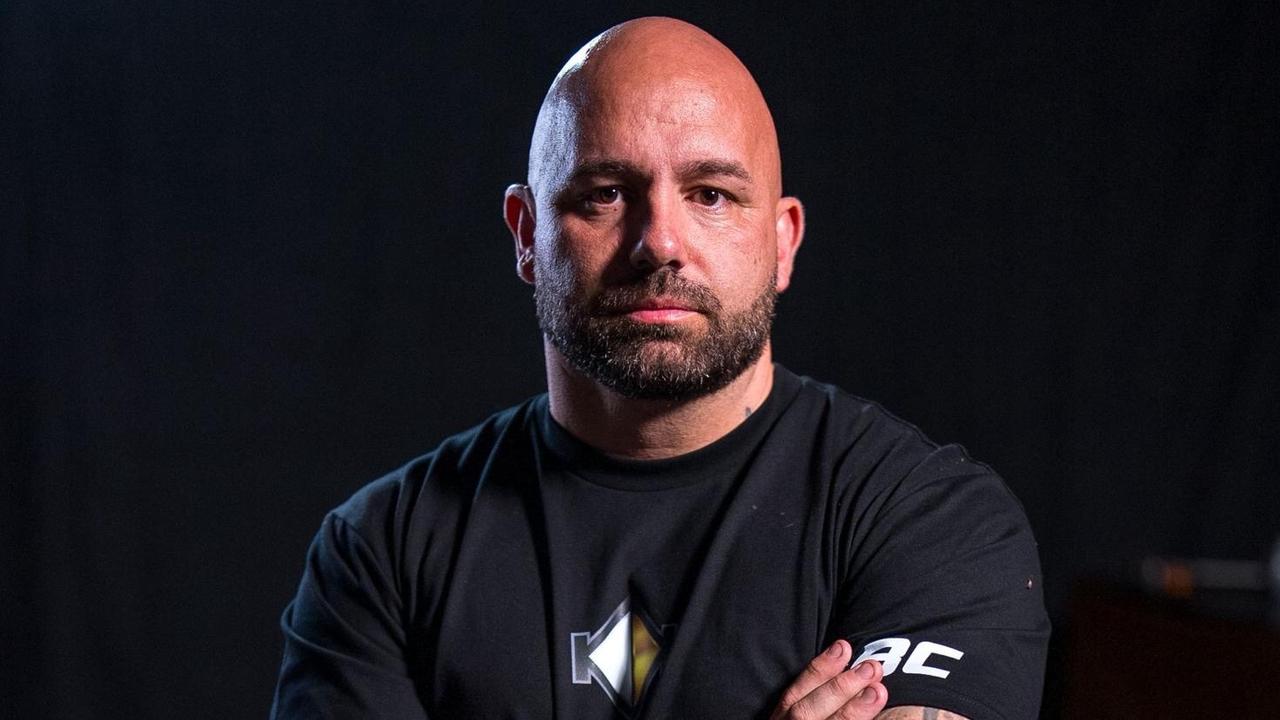It is the Australian-made new combat sport which has exploded into a global phenomenon.
Two months ago, the International Brawling Championship (IBC) was officially launched by a Melbourne-born entrepreneur before 1000 fans at a humble pilot show on the Gold Coast.
Today, brawling is primed to shock the world after the IBC on Friday struck a landmark deal with 14 broadcast partners that will take the all-Australian concept to hundreds of millions of eyeballs around the world.
Described as UFC without wrestling, brawling is the brainchild of Daniel Mac, who hails from Mildura in Melbourne, now lives on the Gold Coast, and has ambitions to be “Australia’s version of Dana White (UFC boss).”
Mac has ploughed around $500,000 of his own money into registering the IBC as a legitimate combat sport and the investment has paid dividends with networks around the globe signing up to televise brawling.
A leading Australian network is also involved in high-powered negotiations and hopes to finalise a deal next week.
The broadcast bonanza is a stunning coup for Mac, a one-man operation who has trademarked his IBC concept with a view to brawling becoming a $1 billion success story.
His next show, his first official televised product at Brisbane’s Nissan Arena on Friday, November 28, will be screened in Australia, New Zealand, America, Israel, the Netherlands, Slovakia, Bulgaria, Pakistan, Kazakhstan and France.
The UFC has become a $15 billion juggernaut and Mac believes the IBC will be the next combat-sports craze to attract sports fans around the world.
“I’m blown away, this is the moment my dream becomes a reality,” the 36-year-old Mac told this masthead.
“We’re on track to be the fastest-growing combat sport in the world — and it all starts here in Australia.
“In the first 24 hours after our first show on the Gold Coast, we had two million views online.
“The way I view this, it’s either a billion-dollar success for me or it’s a total bust, I’ve put everything I have into this venture, and I always believed this concept could succeed as a combat sport.
“We’ve signed up 14 broadcast partners who are taking brawling around the world.
“The TV networks have seen the numbers, the crowd reaction, and the opportunity.
“This is just the beginning. My hope is that IBC will be as big as the UFC.”
The IBC is Australia’s first sanctioned hybrid combat sport — a fusion of fight precision and brawling energy.
Each bout features four two-minute rounds, with fighters wearing four-ounce gloves, as seen in the UFC, and competing exclusively with stand-up striking. There’s no wrestling, knees or elbows.
The action unfolds inside a five metre by five metre cage, designed by Mac himself, ensuring constant engagement between the fighters.
The signature innovation is ‘The Final Stand’.
Once per round, a fighter has the opportunity to invite his opponent to meet inside a small diamond-shaped zone in the centre of the ring, where the two combatants go toe-to-toe — a fan favourite moment that defines the IBC spectacle.
“It’s chaos with control,” said Mac. “There’s the spectacle of a brawl, but the structure of a sport.“
Global sports content creation firm Inverleigh played a key role in brokering the IBC’s historic offshore broadcast deals.
“We’re pumped to partner with IBC in launching a truly game-changing fight sport series,” Inverleigh commercial director Brendon Oliver said.
“In a world awash with MMA and boxing promotions, this initiative stands apart.
“The IBC presents a unique opportunity to disrupt the landscape, to scale rapidly, and Inverleigh is ready to deliver that ambition.”
Mac said all IBC shows will be sanctioned and insured under official Combat Sports Authority regulations, with ringside doctors, nurses and paramedics ensuring full medical compliance and fighter welfare.
One of Australian boxing’s knockout artists, Queensland’s Issac Hardman, has signed a five-fight deal with the IBC and Mac says brawling is another form of combat-sports entertainment.
“I’m here to complement boxing, not destroy it,” Mac said.
“Some boxing purists will see us as a circus act, which is fine, but I just saw an opportunity in the market to build a sport for the spectator.
“I had some female friends come to my first show and they said we don’t really want to watch this … half-an-hour later they were on the edge of their seats.
“These networks have signed us up after just one show, it’s extraordinary.
“I’ve deliberately targeted the free-to-air networks overseas because a lot of people around the world can’t afford to buy Pay TV or cable television.
“We’ve only just started … the sky is the limit.”

